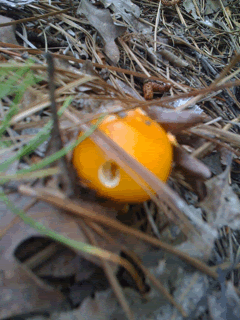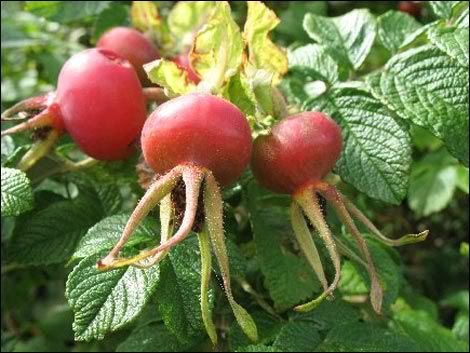
Those who live in a cold climate might be snowed under already, while those blessed with milder weather might enjoy the last warm days and still find nuts and mushrooms to add to a hearty autumn feast. Sitting around an open fire with one's friends and roasting sweet chestnuts (make sure the bottoms are slit or else they will explode on you) and sharing some home made elderberry wine with stories and laughter is a wonderful winter pastime. Walnuts are also still good for picking - lest the squirrels beat you to them. If you don't mind a more 'unusual' flavour, acorns might be worth a try, though they definitely need 'watering' in order to leech out the bitterness. Boil them with several changes of water and then roast them in the oven. Grind them to the consistency you like and try adding them to bread or cake mixes. They impart a very nutty flavour and a tasty little crunch.
In the milder regions mushrooms might still be popping up in the fields and woods until they are killed by the frost. Though before attempting to add wild mushroom species to your foraged dishes make absolutely certain that you have picked only the ones that are good to eat. Ask an expert. In some countries you can go to the pharmacy and ask for help with identification. Or try the local botanical gardens, agricultural extension service or botany department of your university. Join a mushroom foray to get expert instruction on identification and most importantly, how to recognize the poisonous species.
One mushroom that is easily identified even by the novice, is the common inkcap. Use the tall ones as a guide to the colony - while the older ones are not good to eat once their lamella turn pink, the babies are usually never far. Because of the high water content mushrooms often don't cook very well; instead, they simply melt away. However, a great way to prepare them is as fritters. Roll the mushrooms in flour, dip them in beaten egg, then roll them in bread crumbs and drop them into a hot frying pan with sizzling vegetable oil. This way their consistency remains largely intact and the crust adds a nice crunchiness to the experience.

Also, now after the first frost has bitten it is a good time to pick rosehips, sloes, hawthorn berries and certain sorbus species. These fruits need to be bitten by the frost before they become really palatable. The rosehip fruits are soft now and can thus be processed much easier than in their early autumn rock-hard condition. Rosehips are very rich in vitamin C and are a great preventive remedy for winter ails. Process them quickly though, as they contain an enzyme, which will destroy the vitamin C as soon as the cut surfaces are exposed to the air.
I wish I was there to walk the land with you today Sister Love...I wonder what treasures we would find? I love learning from you Miss Brenda..such a wise old Owl are you!
ReplyDeleteAll my love Dear One!